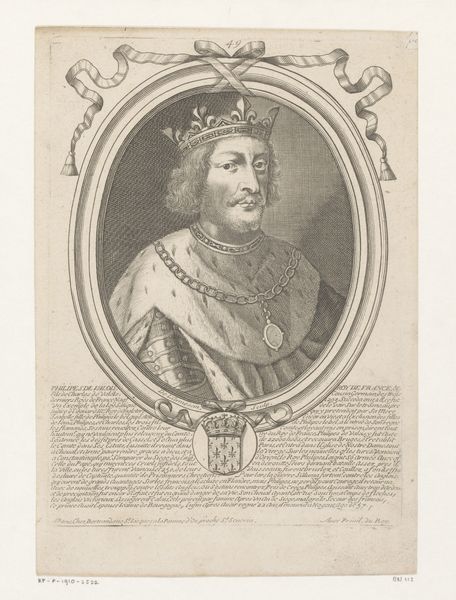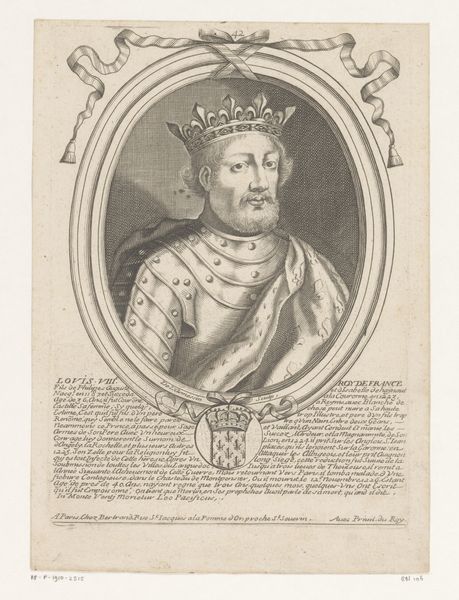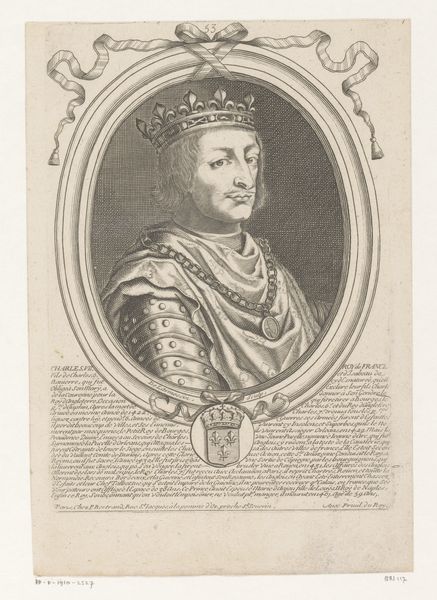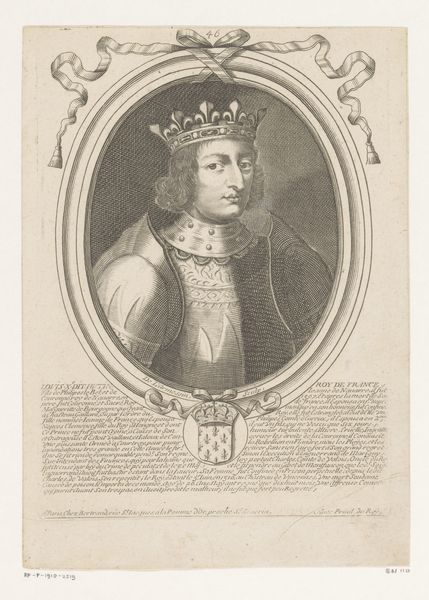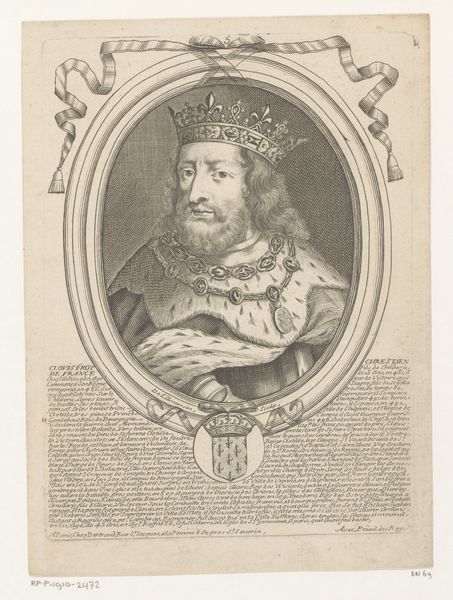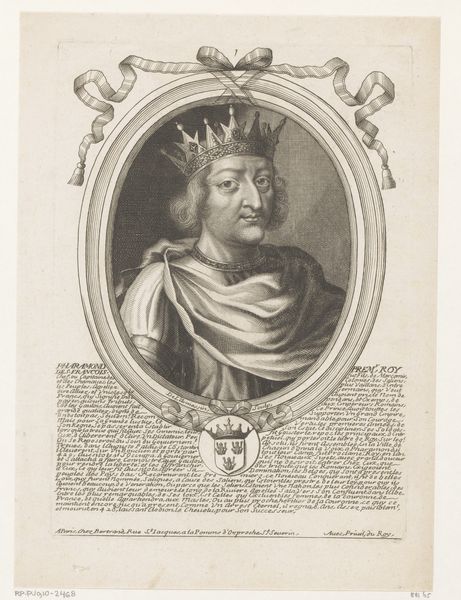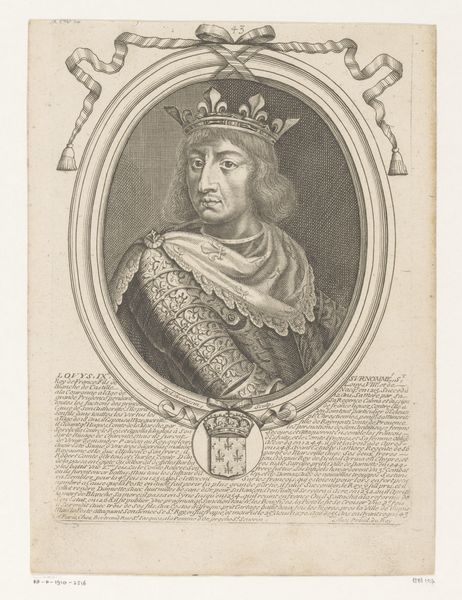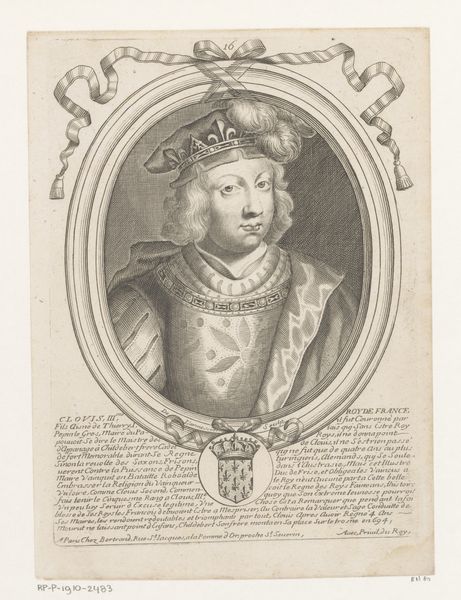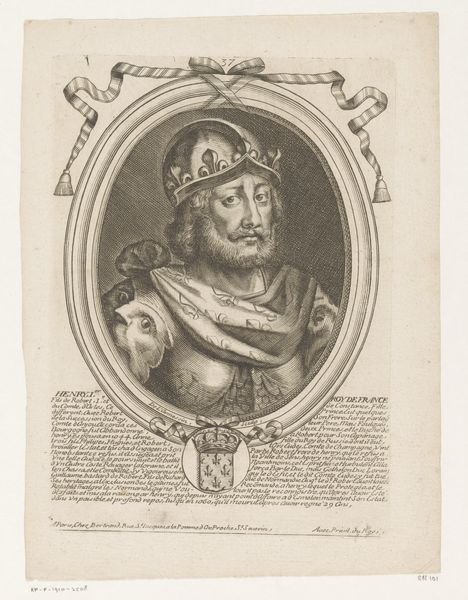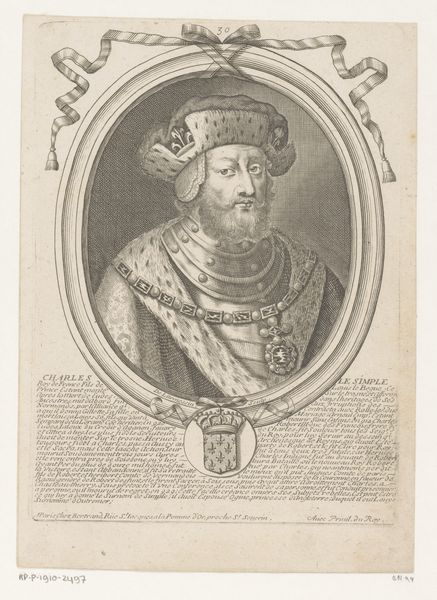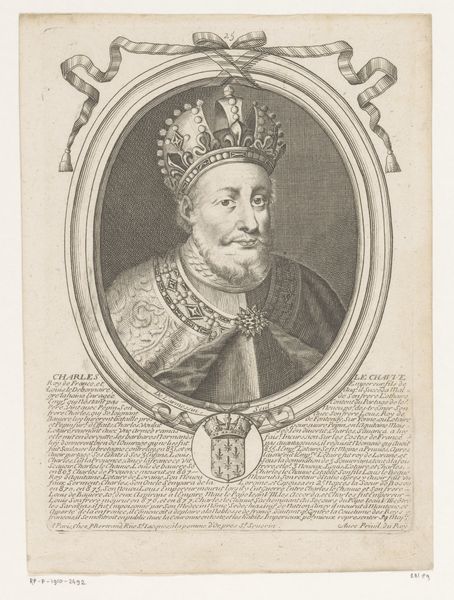
print, engraving
#
baroque
# print
#
old engraving style
#
history-painting
#
academic-art
#
engraving
#
realism
Dimensions: height 235 mm, width 174 mm
Copyright: Rijks Museum: Open Domain
Curator: This print, held here at the Rijksmuseum, is a portrait of Pepin the Short by Nicolas de Larmessin I, dating back to the period between 1647 and 1678. It's an engraving. Editor: My first thought is: This Pepin doesn’t look like he wants to be wearing that crown. He seems weighed down, like he knows the social cost of what’s on his head. Curator: Yes, the portrait certainly captures a sense of gravitas. The symbols surrounding him—the crown, the armour, the heraldic crest below—speak to a specific type of power that rests not only on the individual. He isn’t just Pepin; he embodies the Carolingian dynasty itself. What do you make of that oval frame around him? Editor: Well, framing is always a political act. By placing him within that rigid oval, encircled by that tied ribbon, it sets him apart, defining who is "in" and who is definitively "out". It presents the myth of a divinely sanctioned ruler, a narrative constructed through visual cues as much as historical fact. In our era, we tend to see kings and queens as more vulnerable, less remote from common people, no? Curator: It is intriguing to consider how that symbol has shifted over time. While this rendering of Pepin may suggest unshakable authority, there's a kind of humanity, visible especially in the slightly downturned mouth. And for those of the 17th century, images like these perpetuated notions of divine right and historical continuity for an increasingly literate public. Editor: Agreed, there’s that very subtle vulnerability in the mouth, something so easily missed amid all the pomp. That may reflect some political calculation. Maybe he wanted to project just enough humanness. Who gets to see behind the veil of the crown? What message do the unadorned areas around the figure contribute? Curator: They establish, perhaps, that this symbol stands in a timeless place, beyond material concerns. They draw a through-line, attempting to collapse centuries of political history through heraldry. That history remains visible in the etching itself. Editor: Ultimately, this portrait operates as both a record and an assertion of power. Examining how symbols endure but how their meanings always subtly morph through centuries lets us decode an ideology visually. Curator: It seems in considering all the factors that surround and involve this engraving, both of our approaches help contextualize, appreciate, and most importantly re-evaluate the artwork for a deeper meaning. Editor: Precisely, engaging the artwork from diverse viewpoints offers new lenses, new perspectives, with which to re-assess the piece for the present era.
Comments
No comments
Be the first to comment and join the conversation on the ultimate creative platform.
